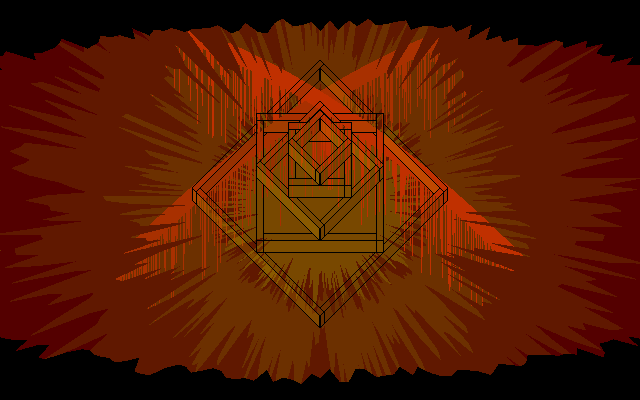--------- Sections ---------
<Index> - >DevDiary< - <Characters> - <Lore>

--- DevDiary ---
- 2023/05/20 -
This week, I worked on the interface and the mechanics of stage transitions.
The seamless transition between stages that SDR has already had works well, but does not allow for neat transitions between stages with different backgrounds. For this purpose, an extra stage reset type has been added, which preserves the lives, the score etc., but sets Pawn to the default position and unloads certain data. I could have adapted the complete stage reset for this, but adding a separate type is more sensible, and prompted me to check and double check for possible leaks and rewrites of numbers whenever a stage changes. Score, score multiplier, time rain timer, time rain phases, pause state, lives, enemy count, I think I have managed to get rid of persistent data between stages where and only where needed.
The stage transition itself needs a graphic of some kind, and so I have carried over the stage title from SD2020 to SDR.
(Note: not the actual enemy placement of stage 1)
One remaining quirk of enemy behavior that is inconsistent between SD2020 and SDR has to do with what happens when Pawn swings the Blade of Banishment for the first time in a stage. In both versions, the game radiates a wave of "awakening" from Pawn's position that awakens every enemy it hits. However, the SD2020 version of the wave instantly skips ahead to the point where it would have hit its first enemy, whereas the SDR version fairly propagates at a constant speed from the very beginning.
This results in a significant period between the first swing and the first enemy's reaction, during which the timer is still counting down, but allows for better positioning, such as swinging the Blade in one corner of the stage and meeting the enemies in the other. I'm not sure if I should keep this change, but it will remain until I encounter something else about the gameplay that definitely suffers from it with no upsides whatsoever.
Of course, with newly found way to change stages with different backgrounds, comes the opportunity to use a different background.
(Note: not the actual enemy placement of stage 2)
The backgrounds of Sunrise Doll do not take making physical sense into account, and their only three jobs are to look pretty, to not obstruct the gameplay elements, and to provide a black strip for Pawn to walk on, in order to blur the line between walking and floating.
The graphics for starting a stage are set, and so are the graphics for ending a stage:
The stage clear screen of Sunrise Doll R has been copied from Sunrise Doll 2020, complete with its mechanics. Clearing a stage nets the player some bonus score, which consists of the perfect bonus and the time bonus.
The perfect bonus is only given if the stage has been cleared without taking a single hit. In SD2020, it was a constant bonus of 50 points, but I think it would be a good idea to make it scale with the difficulty level and/or the stage number in the future.
The time bonus is equal to the remaining time on the timer. This is an elegant way to convert time into score, and it makes sense to give more points for more time left. If the time rain was triggered and later stopped, the remainder of the pity 75 time units is not taken into account - once the timer reaches 0, the time bonus is locked to 0.
The purpose of gaining points, apart from bragging rights, is gaining extra lives. In SD2020, Pawn would get an extra life for every 100 points accumulated. I was inspired by the way extra lives are handled in an old game called King Crisis (王様くらいしす), where an extra life would be gained at the end of every stage.
The title screen of King Crisis.
The intention is to make the acquisition of extra lives as easy as their loss, with the difficulty of the game increasing towards the end to burn the lives away from careless players anyway. Additionally, SDR has a cap of 9 lives max, which will further restrict how much the player can get away with.
The next task at hand is to make a system options menu to allow the player to finetune the game's performance to their liking. If anything, playing a 640x400 game on a modern 1920x1080 screen may not be an ideal setup.
As a bonus, here is the second background image of Sunrise Doll, as is:
